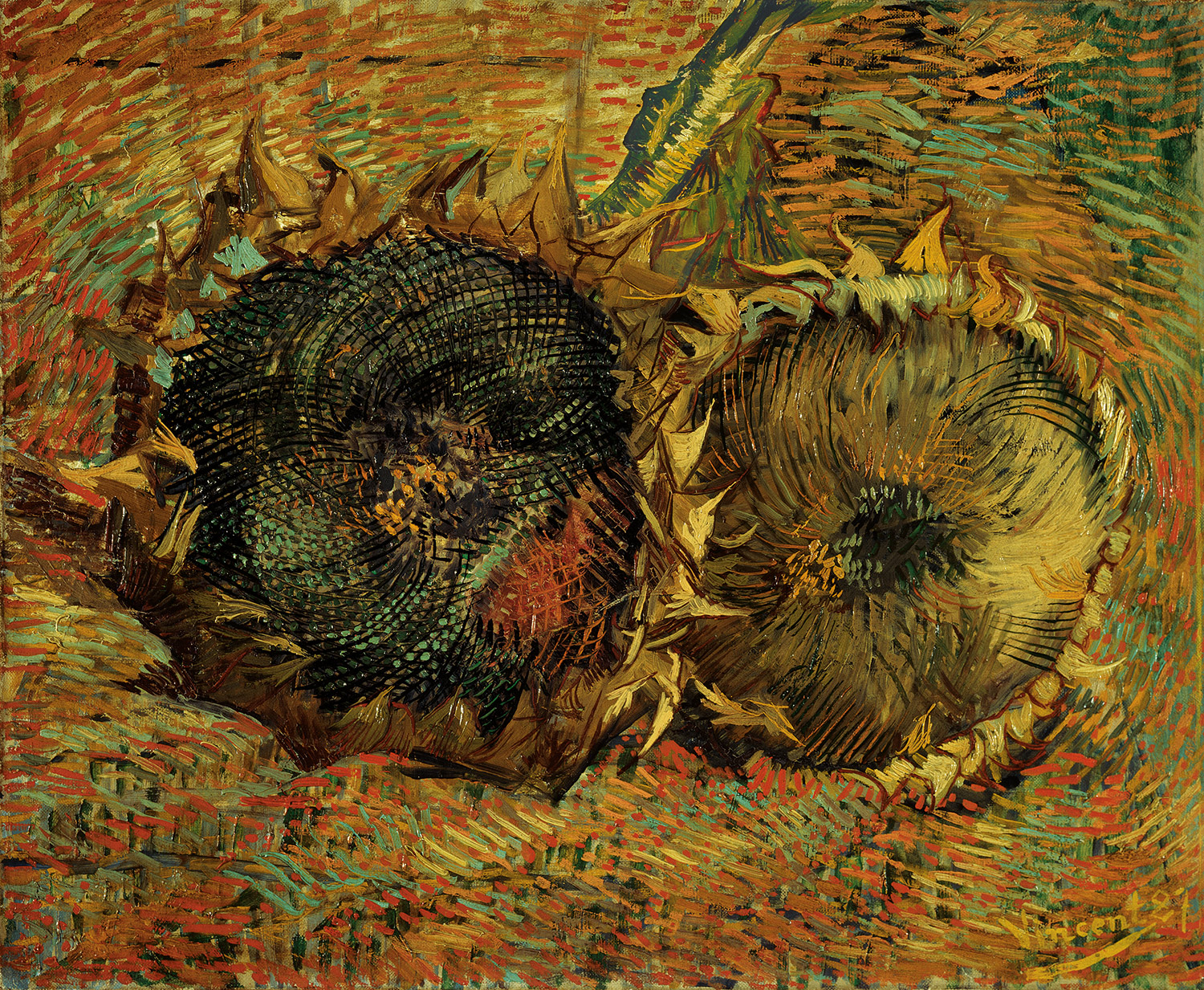For the next four weeks, every Sunday we will present the collection of the Kunstmuseum Bern in Switzerland. The ever-growing collection currently consists of more than 3,000 paintings and sculptures as well as 48,000 drawings, prints, photographs, videos and films. The roots of the museum date back to the revolutionary ideas of the late 18th century, which in 1809 led to the opening of the first museum building establishing the State Art Collection and in 1879 the current building in Bern. So, enjoy :) We start with this magnificent van Gogh :) See you tomorrow!
Vincent van Gogh painted many floral still lifes over the course of his short life as an artist. About a dozen of these depict sunflowers. Four of these works – including our painting – don’t show the flowers in full bloom in a vase, but, rather, lying wilted on a table or on the floor. Just like poor people scarred by life or old, worn out shoes, the artist considered wilted flowers worthy of being painted. Even though the flowers are wilted, the artist presents them in an extremely lively, vibrant and dynamic way. From the respective center of the two blossoms, different-colored brushstrokes spread across the canvas in a swirling motion. By applying the paint in rhythmic brushstrokes, the artist has completely dissolved the base on which the two flowers are lying. This makes the painting appear flat and no longer three-dimensional. As with almost all of van Gogh’s work, the colors and the application of color express the inner tension of the artist while painting.
Out of financial necessity, van Gogh painted over some of his works. An x-ray of our painting revealed the outlines of the portrait of a man underneath the sunflowers, probably a self-portrait. Van Gogh had given the painting to his artist friend Paul Gauguin. From Gauguin, both paintings came into the possession of the art dealer Ambroise Vollard, who sold them to the painter Edgar Degas. When the private collection of Degas was liquidated, the painting came into the possession of the Hahnloser family in the early 1970s, who eventually donated it to the art museum in Bern.


 Vincent van Gogh
Vincent van Gogh